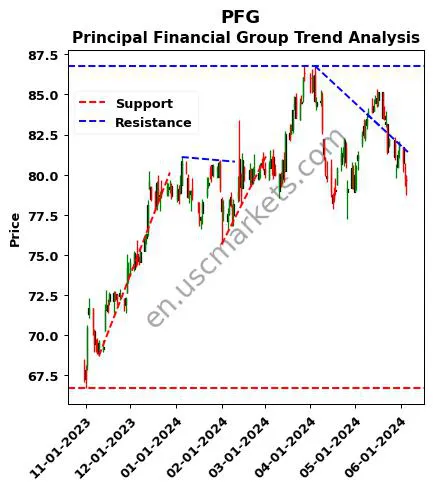Rethinking Middle Management: Their Impact On Company Performance And Employee Satisfaction

Table of Contents
The Crucial Role of Middle Management in Driving Company Performance
Middle managers are not simply cogs in the machine; they are the engine that drives operational efficiency and strategic execution. Their role in bridging the gap between leadership and employees, fostering teamwork, and improving operational efficiency is paramount for overall company performance.
Bridging the Gap Between Leadership and Employees
Middle managers act as a crucial link, translating high-level strategies into actionable plans for their teams. Effective communication is key:
- Effectively communicates company goals and expectations: Translating complex strategic objectives into clear, concise, and easily understood goals for individual teams.
- Provides clear direction and guidance to teams: Offering support and mentorship to ensure teams understand their roles and responsibilities.
- Acts as a conduit for feedback between employees and upper management: Relaying employee concerns and suggestions upwards while effectively communicating management decisions downwards.
- Ensures alignment between individual tasks and overall company objectives: Connecting the dots between individual contributions and the broader company strategy, fostering a sense of purpose and shared mission.
Fostering Teamwork and Collaboration
Effective middle managers cultivate a collaborative environment where team members feel valued and empowered:
- Encourages open communication and knowledge sharing within teams: Creating a culture of transparency and mutual support where team members feel comfortable sharing ideas and expertise.
- Facilitates conflict resolution and promotes teamwork: Addressing conflicts promptly and fairly, fostering a respectful and productive work environment.
- Delegates tasks effectively, empowering team members: Trusting team members with responsibilities, fostering autonomy and ownership.
- Recognizes and rewards team accomplishments: Celebrating successes and acknowledging individual and team contributions to boost morale and motivation.
Improving Operational Efficiency
Middle managers directly influence daily operations, impacting productivity and overall efficiency:
- Optimizes workflows and resource allocation: Streamlining processes to eliminate waste and maximize resource utilization.
- Identifies and addresses bottlenecks in processes: Proactively identifying and resolving issues that impede productivity.
- Implements improvements to increase efficiency and productivity: Continuously seeking opportunities to optimize workflows and improve performance.
- Monitors key performance indicators (KPIs) to track progress: Using data to measure performance, identify areas for improvement, and track progress toward organizational goals.
The Impact of Middle Management on Employee Satisfaction and Engagement
Middle management plays a significant role in shaping employee experiences, directly impacting satisfaction and engagement levels. Their actions can either cultivate a positive and supportive work environment or contribute to a culture of dissatisfaction and low morale.
Mentorship and Development
Effective middle managers invest in their teams' growth and development, fostering loyalty and improving retention:
- Provides regular feedback and coaching to team members: Offering constructive criticism and guidance to help employees improve their skills and performance.
- Identifies training needs and supports professional development: Proactively identifying skill gaps and providing opportunities for training and advancement.
- Creates opportunities for growth and advancement: Providing opportunities for employees to develop new skills and take on increased responsibility.
- Fosters a positive and supportive work environment: Creating a culture of respect, trust, and collaboration where employees feel valued and appreciated.
Open Communication and Transparency
Clear and consistent communication is paramount for fostering trust and improving employee morale:
- Keeps employees informed about company news and changes: Ensuring that employees are kept up-to-date on important developments and changes within the organization.
- Actively listens to employee concerns and feedback: Creating a safe space for employees to express their concerns and feedback without fear of retribution.
- Provides timely and constructive feedback: Offering timely and specific feedback to employees, both positive and constructive, to help them improve their performance.
- Creates a culture of open communication and trust: Fostering an environment where employees feel comfortable communicating openly and honestly with their managers.
Recognition and Appreciation
Showcasing appreciation boosts morale and engagement, reinforcing positive behaviors and improving team cohesion:
- Acknowledges individual and team accomplishments: Recognizing and rewarding employees for their contributions, both big and small.
- Provides regular recognition for exceptional work: Celebrating individual and team successes to build morale and motivation.
- Celebrates successes and milestones: Creating opportunities to celebrate achievements and milestones to foster a sense of accomplishment and shared success.
- Creates a culture of appreciation and respect: Establishing a culture where employees feel valued, respected, and appreciated for their contributions.
Rethinking the Middle Management Structure for Optimal Results
Improving middle management effectiveness requires a multifaceted approach focusing on leadership development, empowerment, and adapting to modern workplace realities.
Investing in Leadership Development
Investing in leadership training programs significantly enhances the skills and capabilities of middle managers:
- Provides training on leadership skills, communication, and conflict resolution: Equipping managers with the skills they need to lead effectively.
- Offers mentoring and coaching opportunities for middle managers: Providing ongoing support and guidance to help managers develop their leadership skills.
- Develops succession plans to ensure leadership continuity: Creating a pipeline of future leaders to ensure the long-term success of the organization.
- Invests in ongoing professional development for middle managers: Providing opportunities for continuous learning and growth to keep managers’ skills current.
Empowering Middle Managers
Delegation and trust are key to empowering middle managers and fostering a more agile and responsive organization:
- Empowers middle managers to make decisions and take ownership: Giving managers the autonomy to make decisions and take responsibility for their teams' performance.
- Provides middle managers with the resources and support they need: Ensuring that managers have the resources and support they need to be successful.
- Trusts middle managers to manage their teams effectively: Avoiding micromanagement and trusting managers to lead their teams effectively.
- Reduces micromanagement and promotes autonomy: Creating a culture of trust and empowerment where managers are given the freedom to manage their teams effectively.
Modernizing Management Styles
Adapting to the changing landscape of the modern workplace requires a flexible and adaptable approach to management:
- Encourages agile and flexible working approaches: Embracing agile methodologies and flexible work arrangements to improve responsiveness and efficiency.
- Embraces new technologies and tools to improve efficiency: Utilizing technology to streamline processes and improve communication.
- Promotes a culture of continuous improvement: Fostering a culture of continuous learning and improvement to ensure the organization remains competitive.
- Adapts management styles to meet the needs of diverse teams: Recognizing the importance of diversity and inclusion and adapting management styles to meet the needs of diverse teams.
Conclusion
Rethinking middle management is not just about restructuring; it's about recognizing their vital role in driving both company performance and employee satisfaction. By investing in leadership development, empowering middle managers, and fostering open communication, organizations can unlock the full potential of this critical layer. Effective middle management is the backbone of a successful and thriving organization. Don't underestimate their impact; rethink your approach to middle management and reap the rewards of increased productivity, improved employee engagement, and significantly better overall company performance. Start rethinking your middle management strategies today!

Featured Posts
-
 Nba Season Finale Live Stream Ny Knicks Vs Brooklyn Nets April 13 2025
May 17, 2025
Nba Season Finale Live Stream Ny Knicks Vs Brooklyn Nets April 13 2025
May 17, 2025 -
 Mission Impossible China Release Date Confirmed By Paramount
May 17, 2025
Mission Impossible China Release Date Confirmed By Paramount
May 17, 2025 -
 Ubers Future Is It A Good Long Term Investment
May 17, 2025
Ubers Future Is It A Good Long Term Investment
May 17, 2025 -
 Principal Financial Group Pfg Stock 13 Analyst Ratings Analyzed
May 17, 2025
Principal Financial Group Pfg Stock 13 Analyst Ratings Analyzed
May 17, 2025 -
 Office365 Security Breach Millions In Losses Suspect Arrested
May 17, 2025
Office365 Security Breach Millions In Losses Suspect Arrested
May 17, 2025
